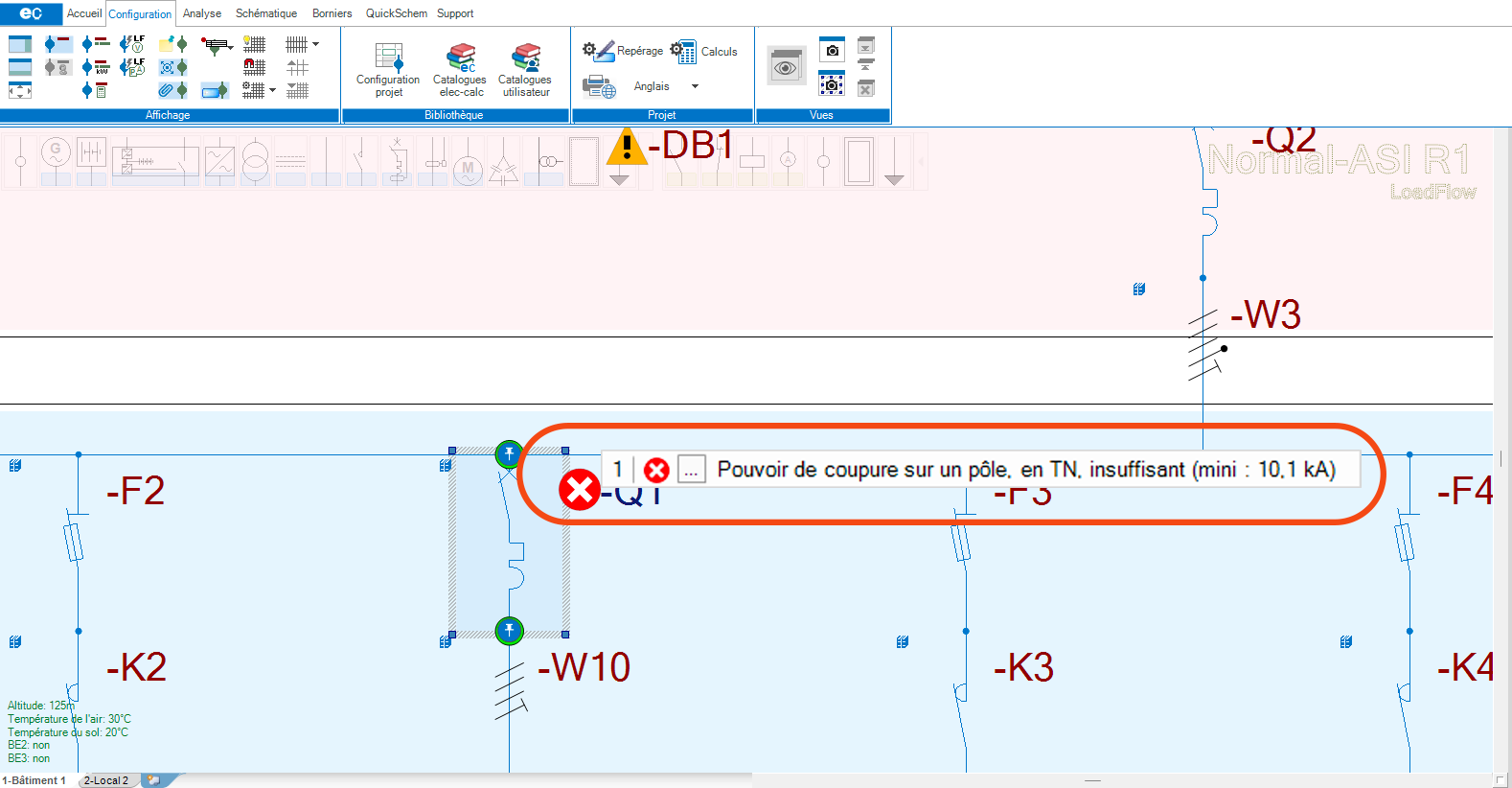The genesis of the problem is contained in a question put to the UTE in early 2010 and its response, which was the subject of interpretation sheet 15-100 F13, subsequently reproduced in amendment 4 of standard NF C 15-100 (05/2013):
The fault configurations that motivate this requirement are faults between a single phase and earth, whether the circuit is four-, three-, two- or single-phase. In all these cases, the protection device is activated on a single pole, and the voltage across this pole is the circuit’s single voltage.
The question then arose as to how to carry out this verification. A first element is provided in document FD C 15-500 which, since July 2015, specifies in paragraph 9.5 the maximum fault current to be taken into account when carrying out this verification:
Calculation of the maximum fault current Iefmax for the TN diagram
This short-circuit current is calculated to determine the required single-pole breaking capacity. In the event of a short-circuit between the phase and the PE or PEN conductor, the Iefmax current is equal to :

And we must have: Iefmax < (Breaking capacity on 1 pole at Un/√3)
If the first member of the equation is then defined, all that remains is to find the second member. But that’s where the problem lies.
Let’s start by eliminating the case where the answer is simple:
This standard defines a test to determine the 1-pole breaking capacity at phase-to-phase voltage (IIT), which is useful in IT installations. This value can of course be used in TN diagrams, but as the test voltage is higher, this value is too low to be usable in the majority of cases.
On the other hand, standard NF EN 60947-2 does not provide for the same type of single-voltage test. Consequently, the breaking capacity value of interest to us is not systematically available in manufacturers’ data sheets.
Corollary problem: if a 1-pole breaking capacity value at single voltage is available, what position should be adopted if the Icu breaking capacity is obtained by wiring (the problem does not arise with IIT because wiring is forbidden in IT diagrams) or for coordination with switches?
The current situation
Since the requirement to verify the breaking capacity on 1 pole at single voltage in TN diagrams was included in the standard, numerous discussions have taken place with the manufacturers’ federations, software publishers and national standardization bodies concerned. To date, however, there is no official position on the subject.
However, in recent years, French circuit-breaker manufacturers, in response to requests from users and software publishers, have in most cases included the relevant data in their technical documentation. This is less true of foreign manufacturers, probably because the requirement to check the breaking capacity on 1 pole at single voltage in TN diagrams, which is of proven technical relevance, is only clearly stipulated in the French standard, but not in the equivalent IEC or CENELEC standards.
A few thoughts on the subject
3P, 4P and 3P+N circuit breakers without “reduced” phase pole : it would seem logical to say that the breaking capacity on 1 pole at single-phase voltage is equal to the breaking capacity Icu at phase-to-phase voltage, following the example of the commentary in standard NF C 15-100 (533.3.1) for breaking capacity IIT: “In the absence of more precise information, it can be assumed that the breaking capacity on a single pole under the phase-to-phase voltage of three-pole and four-pole devices is at least equal to the ultimate three-phase breaking capacity under a voltage equal to √3 times that of the nominal voltage of the circuit concerned.” Such a proposal would resolve a number of situations.
3P+N circuit breakers with one “reduced” phase pole, 2P and 1P+N: only the manufacturer can provide the relevant data.
Use of parentage or coordination: here again, only the manufacturer can provide the relevant data.
We also hope that a future update of IEC 60947-2 will include this test to determine 1-pole breaking capacity at single voltage.
Trace Software International’s position
As a software publisher specializing in the design of electrical installations, verification of the breaking capacity on 1 pole at single voltage in TN diagrams is essential when choosing a hardware reference. If we have the relevant manufacturer’s data at our disposal, the verification is carried out as a matter of course.

If this data is not available, it is not up to us to “turn a blind eye” or to suggest that the user do so. The software will therefore show an error, which the user can justify if he asks the manufacturer to comment on the case.








